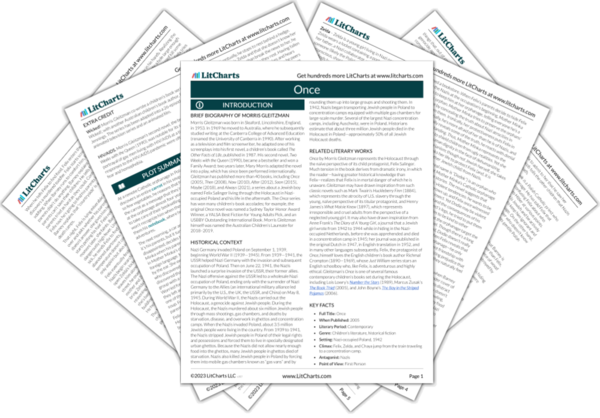Once by Morris Gleitzman represents the Holocaust through the naïve perspective of its child protagonist, Felix Salinger. Much tension in the book derives from dramatic irony, in which the reader—having greater historical knowledge than Felix—realizes that Felix is in mortal danger of which he is unaware. Gleitzman may have drawn inspiration from such classic novels such as Mark Twain’s
Huckleberry Finn (1884), which represents the atrocity of U.S. slavery through the young, naïve perspective of its titular protagonist, and Henry James’s
What Maisie Knew (1897), which represents irresponsible and cruel adults from the perspective of a neglected young girl. It may also have drawn inspiration from Anne Frank’s
The Diary of A Young Girl, a journal that a Jewish girl wrote from 1942 to 1944 while in hiding in the Nazi-occupied Netherlands, before she was apprehended and died in a concentration camp in 1945; her journal was published in the original Dutch in 1947, in English translation in 1952, and in many other languages subsequently. Felix, the protagonist of
Once, himself loves the English children’s book author Richmal Crompton (1890—1969), whose
Just William series stars an English schoolboy who, like Felix, is adventurous and highly ethical. Gleitzman’s
Once is one of several famous contemporary children’s books set during the Holocaust, including Lois Lowry’s
Number the Stars (1989), Marcus Zusak’s
The Book Thief (2005), and John Boyne’s
The Boy in the Striped Pajamas (2006).
